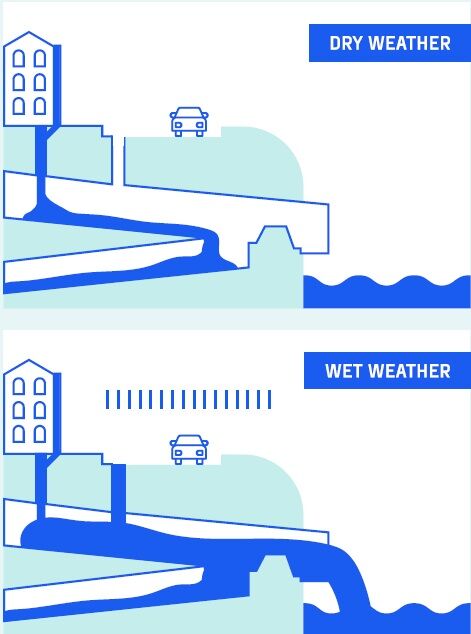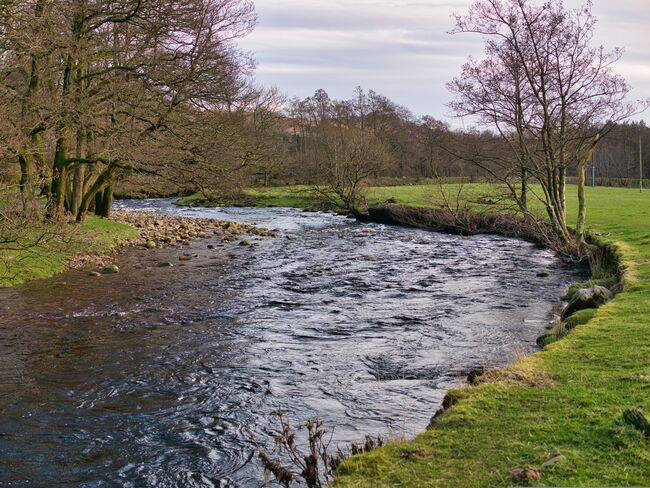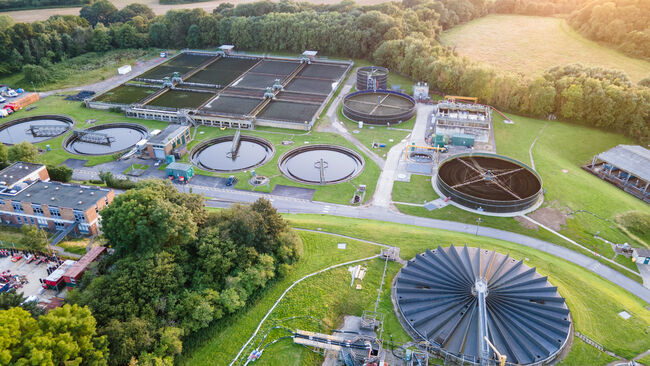Storm overflows
We are ready to embark on the biggest programme for reducing overflows in the world
£10bn
will be invested in an intensive programme over the next seven years to reduce sewage overflows
100%
of storm overflows will be monitored by the end of 2023 in England and Wales
100,000 kilometres of England’s sewer pipes were built before the mid-1960s and use an old-fashioned design that carries two kinds of waste: rainwater from street drains, and sewage from homes.
These combined sewers were built many decades before modern rates of population growth and climate change were understood, which means that there is often now more sewage and rainwater going into these systems than first envisaged.

What are CSOs?
CSO stands for Combined Storm Overflow, which is an outlet from the public sewer that is designed to spill excess rainwater and sewage into the environment if sewers become inundated with rainwater. They do this to prevent the combined mixture flooding back up into homes.
Plans for Urgent Change
This summer, we will release a National Overflows Plan that updates the public on the actions industry intends to take. Companies have confirmed that they are ready to back the plan with investment worth £10bn - a more intensive investment than any country has ever attempted on overflows, and triple the current rate. The Plan will include:
- Increasing the capacity of sewage treatment works, allowing them to treat higher volumes of rainfall and sewage;
- Installing storm overflow tanks to hold surges in rainwater that would otherwise overload the system, with new storage equivalent to several thousand new Olympic swimming pools;
- Replacing concrete with grass and ponds to reduce rainfall run-off entering sewers, protecting them against the overloading that causes spills; and
- Improvements to the sewer network, including expanding and improving pipes, allowing them to safely carry more during peak times.
Transparency and accountability
Every water and sewage company in England will have their own map showing the operation of all of their overflow spills. Building on that, as an industry we are also working to:
- Bring individual companies’ data together into a single national picture, available to any member of the public that wants to see what’s happening in their area – in near real-time
- Ensure that the map has independent oversight to ensure people can be confident in what they’re seeing
- Add further data as it becomes available, for example from monitors checking the quality of river water so everyone can see the impact sewage is having
This means that the nation’s swimmers, canoeists, tourists, and anglers will all be able to see exactly what’s happening, virtually as it’s happening, across every river and beach. This will be the first time anywhere in the world that live storm overflow information will be made available right across the country.
+ -
Our plan, published later this summer, will set out when each of the 15,000 overflows in England benefit from our unprecedented levels of proposed investment – we are ready to triple what we’re spending (up from £3.1bn – which includes Thames Tideway – to £10bn).
We also recognise that transparency is an important part of how we will reassure people about the progress being made. That’s why we are also committing to the world’s first ever national data hub to provide data on the operation of all 15,000 sewage overflow sites across England. This will empower people will information and improve accountability.
+ -
The rules that determine the legality of a spill are set out in each overflow’s permit, with which compliance is very high (about 97% last year). We get though that this also misses the point because regardless of legality, people want these things gone.
+ -
The engineering solutions for the removal of CSOs are complicated as many of the older sewers serve towns and cities running under buildings and roads. The ‘replacement of all CSOs’ would take many years to achieve and result in major disruption. This is not a reason not to do it, but there is no quick fix.
The cost to re-plumb these areas is estimated to be up to £600 billion nationwide. This level of investment needs to be agreed by regulators and balanced with keeping customer bills affordable. Water companies have been addressing CSOs for years, taking a prioritised approach to those causing environmental harm first.
If CSOs are removed, then solutions are required to address excess surface water which will cause flooding. Adequate flood defense systems must be installed which include solutions for the storage of rainwater from highways and buildings. This will require land acquisition which can be difficult in urban areas.
+ -
The biggest impact to the environment when CSOs operate is when non-flushable items cause blockages in sewers. These discharges are more harmful as they are not predominantly rainwater. Wet wipes, cotton buds, sanitary products and fats oils and greases all create blockages in the pipes that make CSO discharges more likely.
Reducing the likelihood of blockages caused by non-flushable items such as wipes, and FOGs is a key way that individuals can help.
+ -
We work closely with all the leading NGOs in this area (including Rivers Trust, Anglian Trust, Wetlands Trust, RSPB) and other interest groups such as Keep Britain Tidy and Catchment Based Partnerships to help develop policy.
Companies are in the process of publishing their Drainage and Waste Water Management Plans (DWMPs) at the moment. These plans will inform their investment for PR24.
DWMPs are the plans for the future of drainage, wastewater and environmental quality and provide the basis for more collaborative and integrated long-term planning by organisations that have interests and/or responsibilities relating to drainage, flooding and protection of the environment. The production of DWMPs is led by water companies, all of these organisations have a part to play in their creation. By planning together, organisations are more likely to work together to deliver improvements that benefit the communities we live and work in
One of the biggest collaborative activities recently has been the Storm Overflows Task Force. The taskforce has 9 permanent members, drawn from the water industry, environmental non-governmental organisations, government representatives and regulators. The taskforce is chaired by the Department for the Environment, Food and Rural Affairs (Defra) and has two main goals;
- proposals to significantly reduce the frequency and impact of sewage discharges from storm overflows
- short-term actions to accelerate progress to reduce the harm caused by storm overflows
The task force has produced a Storm Overflow Reduction plan with specific targets of:
- By 2035 water companies will have improved all overflows discharging into or near every designated bathing water and improve 75% of overflow discharging to high priority sites
- By 2050, no storm overflows will be permitted to operate outside of unusually heavy rainfall or to cause any adverse ecological harm
Within these the specific targets are:
- Water companies will only be permitted to discharge from a storm overflow where they can demonstrate that there is no local adverse ecological impact
- Water companies must significantly reduce harmful pathogens from storm overflows discharging into and near designated bathing waters (by disinfection or reducing the discharge frequency to meet EA spill standards by 2030)
- Storm overflows will not be permitted to discharge above an average of 10 rainfall events per year by 2050
- Water companies will be required to ensure all storm overflows have screening controls
Government will produce a report on progress in 2025 and review targets in 2027.
+ -
No, they are in many other European countries too. The UK actually have a much lower number of CSO's than other countries and in fact, some countries do not even know how many they have. England and Wales will have 100% monitoring by end of 2023.
+ -
Yes. According to Environment Agency figures more than 90% of storm overflows are currently monitored and we expect this to increase to 100% by the end of 2023.
+ -
For the first time, we will be detailing our plans for all 15,000 overflows in England. We will set out when each overflow will benefit, and, where projects have been sufficiently developed, show how much we plan to invest, the type of scheme, and the expected result.
Storm overflows Q&A
Read more

Our plan for waste water
Every water and sewage company in England has developed a plan to expand drains and sewers and reduce sewage going into rivers

Protecting rivers and coasts
Over the last 30 years, the water industry has invested £30 billion in the environment but more needs to be done

Waste water
What is involved in maintaining sewers and current issues the industry is facing




